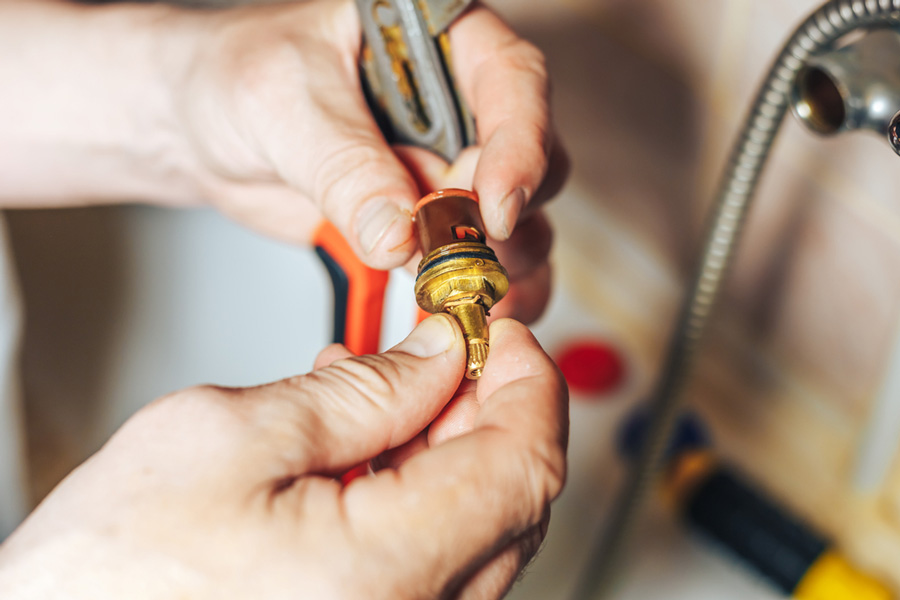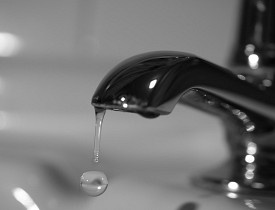My Motives Behind Repairing a Dripping Faucet
My Motives Behind Repairing a Dripping Faucet
Blog Article
We've come across the article pertaining to Should I Repair or Replace a Leaky Faucet? listed below on the web and thought it made good sense to discuss it with you on this page.

Dripping taps might seem like a small hassle, but their impact surpasses just the annoyance of the sound. From drainage to incurring unnecessary financial expenses and wellness risks, overlooking a trickling faucet can bring about various effects. In this article, we'll explore why it's critical to address this common house problem quickly and successfully.
Wastefulness of Water
Environmental Impact
Trickling taps contribute considerably to water wastage. According to the Environmental Protection Agency (EPA), a single tap trickling at one drip per second can squander more than 3,000 gallons of water per year. This not just pressures water sources yet additionally influences environments and wild animals based on them.
Financial Costs
Raised Water Bills
Past the environmental effect, trickling taps can pump up water bills substantially. The built up wastage gradually equates into greater energy expenses, which might have been prevented with timely fixings.
Potential Property Damage
Furthermore, extended leaking can lead to harm to fixtures and surface areas bordering the faucet. Water accumulation can create staining, deterioration, and even structural concerns if left neglected, leading to added fixing expenses.
Health and wellness Issues
Mold and Mildew Development
The constant existence of wetness from a dripping faucet creates a perfect atmosphere for mold and mildew growth. These fungi not only endanger interior air top quality yet also present wellness risks, especially for people with respiratory system conditions or allergies.
Waterborne Illness
Stagnant water in dripping taps can end up being a breeding place for germs and various other pathogens, boosting the threat of waterborne conditions. Impurities such as Legionella microorganisms prosper in stagnant water, potentially causing severe health problems when consumed or inhaled.
Do it yourself vs. Specialist Fixing
Pros and Cons of Do It Yourself Repair Work
While some may try to repair a dripping tap themselves, do it yourself fixings include their very own set of difficulties. Without proper knowledge and devices, DIY attempts can exacerbate the concern or bring about incomplete fixings, extending the problem.
Benefits of Working With an Expert Plumber
Working with a specialist plumber guarantees that the underlying cause of the leaking tap is addressed successfully. Plumbers have the competence and devices to diagnose and repair tap issues efficiently, conserving time and decreasing the risk of more damages.
Step-by-Step Overview to Dealing With a Dripping Faucet
Tools Required
Before trying to deal with a trickling faucet, gather the required devices, consisting of a flexible wrench, screwdrivers, replacement parts (such as washing machines or cartridges), and plumber's tape.
Common Faucet Issues and Their Solutions
Identify the sort of faucet and the particular concern creating the drip. Usual problems include damaged washing machines, rusty shutoff seats, or defective O-rings. Refer to maker instructions or on the internet tutorials for step-by-step assistance on repair services.
Safety nets
Regular Upkeep Tips
To stop trickling taps, perform routine upkeep such as cleansing aerators, examining for leaks, and replacing damaged parts without delay. Additionally, take into consideration installing water-saving gadgets or upgrading to extra reliable components.
Significance of Prompt Fixes
Dealing with trickling faucets as soon as they're noticed protects against more water wastage and prospective damages, ultimately saving both water and money over time.
Effect On Building Value
Assumption of Well-Maintained Building
Maintaining a property in good condition, including dealing with upkeep problems like trickling faucets, enhances its perceived value and charm amongst potential buyers or occupants.
Influence on Resale Value
Qualities with properly maintained plumbing fixtures, consisting of faucets, command higher resale values in the realty market. Attending to leaking faucets can contribute to a favorable impression during building inspections and negotiations.
Environmental Responsibility
Private Contribution to Preservation
Taking obligation for repairing leaking faucets lines up with wider initiatives toward water preservation and environmental sustainability. Every person's actions jointly make a considerable effect on preserving precious resources.
Sustainable Living Practices
By prioritizing timely fixings and adopting water-saving behaviors, people contribute to sustainable living techniques that profit both existing and future generations.
Verdict
Attending to a trickling tap surpasses plain convenience; it's a necessary step towards preserving water, minimizing financial costs, and safeguarding health and residential property. Whether with do it yourself repairs or professional assistance, taking action to fix trickling faucets is a little yet impactful method to promote accountable stewardship of resources and add to a healthier, extra sustainable future.
Why Are My Faucets Dripping (And Can I Fix it Myself)?
Causes of a Dripping or Leaking Faucet
Whether you’re hearing drops of water falling and hitting a sink, or noticing water ooze out from the base of the spout, you shouldn’t ignore a dripping or leaking faucet. And, the good news is, sometimes you can fix the problem yourself.
In this article, we’ll review a few common causes of dripping and leaky. We’ll also walk you through some basic ways to find the problem and handle it without calling anyone — and let you know when to call in a pro.
But, no matter what the cause, or whether you can handle it on your own, the sooner you address it, the better.
Each drip may be a tiny amount of water. But, they all add up quickly. According to the U.S. Geological Survey, one faucet losing one drop every 20 seconds — five a minute — wastes around a liter of water every day, and 173 gallons a year.
Add in more than one in your house, and it’s a lot of water to waste. So, we’ll help you get to the bottom of things quickly.
Four Reasons Your Faucet May Be Dripping
Aerator is Damaged or Unseated Valve Seat is Corroded O Ring is Loose or Worn Out Part of the Assembly is Loose Aerator is Damaged or Unseated
If you unscrew the end of your faucet, you’ll find the aerator. It’s the little stem piece with a screen on it that shuts off the water circulation.
If it’s damaged, or if it’s not sitting right, it will allow water to pass through.
Valve Seat is Corroded
Next is the valve seat, which is connected to the washer. If the washer wasn’t in place correctly, then it could have ground against the seat. Over time, this damages the valve seat.
The problem could also be corrosion: Over time, the part has worn out, and it’s now allowing water to pass through.
O Ring is Loose or Worn Out
Since the o ring is only a small rubber gasket, it’s a common reason why the faucet is dripping. You’ll find it at the base of the faucet, and it’s there to keep water from coming out where it’s not supposed to.
However, it’s common for the o ring to wear out over time. When it does, you’ll notice a drip.
Part of the Assembly is Loose
So far, we’ve looked at a few small, specific parts. But, the problem could be anywhere in the assembly if something’s out of place.
Even if a part isn’t damaged, over time, it may have become loose or dislodged. It could be the parts we mentioned, or the aerator at the tip of the faucet, the stem itself,
Can I Fix a Leaky Faucet Myself?
Depending on the problem, and how handy you are, there’s a chance you can fix a leaky faucet without calling a professional. But, you do run the risk of making the problem worse.
If it’s a small drip, you can certainly try a few troubleshooting tactics. We’ll walk you through them in a moment.
But, no matter what, your first step should be shutting off the water coming into the faucet. You should find a shutoff valve under the sink on the pipes leading to it. Turn each one clockwise until they close tightly.
Next, make sure you have the right tools for whatever you’re attempting. It’s tempting to make do with what you have. But, you need the right ones for a reason: You’re often dealing with small parts that can break if you handle them carelessly.
If you’re feeling confident, here are some places to start.
Items Near the Tip of the Faucet
A few of the parts we mentioned — particularly the valve seat and washer — are located at the tip of the faucet where the water comes out. They’re easy to access, making it a good place to start.
Check the O Ring
To check the o ring, you’ll need to take off the spout at the base. It’s easiest on kitchen sinks with long spouts, versus the smaller, bulkier base on most bathroom sinks.
Either way, this can be tricky, so do it carefully and don’t force anything. If it’s not coming right off, you’re much better off calling in a pro than possibly breaking something.
For a kitchen sink, there’s usually a nut or coupling assembly at the base of the spout. These often slide off easily without using any tools.
Once you’ve disassembled those parts, gently but forcefully twist off the spout.
Then, you can see the o rings. There should be two of the rubber gaskets on the base. If they look worn or damaged, replace them, and see if that solves the problem.

Hopefully you enjoyed our part about 4 Common Reasons for a Leaky Faucet. Thanks a ton for taking a few minutes to read our blog post. Sharing is caring. Helping others is fun. I love reading our article about Leaky Faucets: Why They Happen & What to Do About Them.
Report this page